A Hose By Any Other Name, Part 1
From 30,000 feet, 2009’s Zendikar through Return to Ravnica block was a Renaissance for the game—the establishment of Modern, the successes of Innistrad, the printing of enemy fetchlands and reprinting of shocklands, the kickoff of the Masters reprint series, and the post-Alara design philosophy at Wizards were all driving player acquisition and player engagement.
At a more granular level, there were serious mistakes: Phyrexian mana, Splinter Twin, arguably Infect, definitely Caw-Blade, Mox Opal in Modern, Jace, the Mind Sculptor in Standard, etc. It was also the era when Magic’s Core Sets were most coherent as plane-agnostic, conceptually-resonant sources of reprints for Standard.
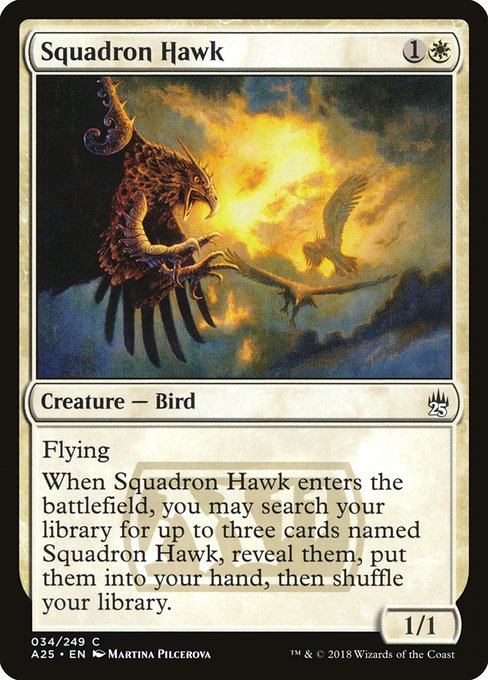
At the time, the major tournament formats were Standard and the now-vanished Extended, a rotating format that encapsulated the last four years of Standard sets. Legacy was entering a surge of speculative interest that, combined with the popularity of Commander, ensured that most players were priced out of the format, and Commander’s (or EDH’s) adoption by Wizards forced out 60-card four-of casual. It was a period of reinvention and realignment after fifteen years of Magic at a time when Magic, rebounding from a sales slump, needed reinvention.
From the macro perspective, a global economic downturn, the adolescence of handheld technology, and a booming player base meant Magic had to sand down some of its friction points, strategize for decades of future play, and streamline its creaking rules system. To do that and hit their sales metrics, Wizards needed an on-ramp for newer players, and they landed on a revision of the base set/core set model with the launch of Core Set 2010, which was focused on a) overhauling the rules (less majorly than with Sixth Edition, but more so than with Ninth) and b) printing new, evocative cards, a first for a core set.

All the lofty talk of resonance was a façade behind which the machinery of consumption rattled on, setting Wizards up to sell a set four times a year instead of core set boosters languishing on stores’ shelves and confusing new players. Over the next decade, Wizards would tinker with this model, dropping it after Magic Origins, bringing it back in 2018 with M19, before dropping it again in 2021, suggesting it never hit the benchmarks Wizards wanted. From a design perspective, though it was a success–without the Core Set model, we wouldn’t have Grand Abolisher, Primeval Titan, or Omniscience. We also wouldn’t have an avenue to reprint tournament-relevant sideboard tools like the Leylines, Containment Priest, or Grafdigger’s Cage.
What did this new model mean for color hosers? It represented a significant shift from the old pre-Alara mass-hoser designs like Choke and a pendulum towards the modern, efficient-but-situational mode that lasts through today. M10 set the precedent with a sampler of individual color hate cards, from Coldsnap’s Deathmark and Flashfreeze to Conflux’s Celestial Purge and newcomer Mold Adder. M11 brought these back with Autumn’s Veil replacing Mold Adder and Combust replacing Ignite Disorder–an upgrade in both cases, but still not enough to see significant play.

All of these are efficiently costed, but not really maindeck-able unless the metagame is skewed towards a certain deck. What this means–perhaps problematically, as the format continues to accrue cards–is that Pioneer is defined by the post-M10 model of color hosers: as last month’s Standard bans prove, trying to trade one-for-one with the Rakdos pilot won’t get you far. Aether Gust only resets their Fable of the Mirror-Breaker and Divine Smite may trade at a cheap rate for a Kroxa, but the damage has already been done.
It’s the fundamental tension of post-M10 color hate: Skylasher may absolutely dunk on Delver of Secrets, but what does it do against every other decks? Magic 2014 attempted to tackle this with a handful of creatures with decent stats and relevant creature types that hosed an enemy color–Witchstalker, Lifebane Zombie, Mindsparker, Fiendslayer Paladin, and Tidebinder Mage–which partially solved the problem.
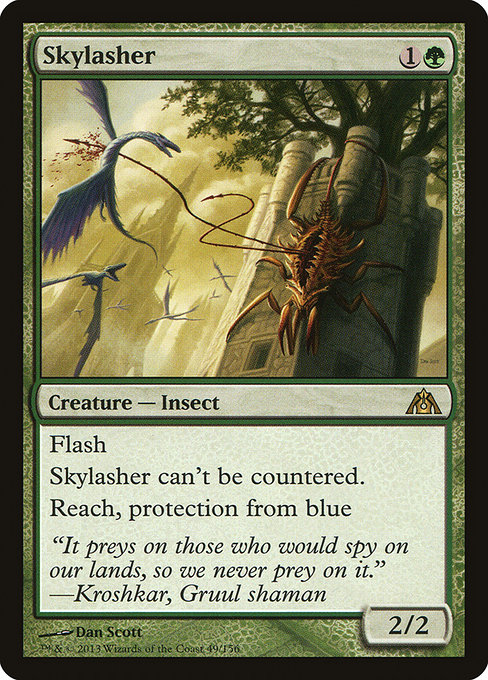
M20 had a similar cycle of creatures with protection from an enemy that were especially potent against that enemy’s strategies: Apostle of Purifying Light, Cerulean Drake, Blightbeetle, Unchained Berserker, and Shifting Ceratops. Results were mixed, with Blightbeetle as the winner of that cycle, and even then, predominantly as a sideboard card in the Modern Yawgmoth combo mirror match. The fact is, trading one-for-one for specific metagame threats isn’t worth a precious 1-out-of-75 slot. Luckily, Arena was waiting in the wings to demonstrate a new model.
In 2019, Wizards launched Magic Arena after a decade of Duels of the Planewalkers and the stopgap of Magic Duels, which was an odd hybrid of half Duels of the Planeswalkers, half Arena*. Arena was meant to provide a complete deck building and drafting experience like Magic Online, but with a modern aesthetic and streamlined accessibility, and it had to compete with Hearthstone and the pantheon of mobile games to which the casual players Wizards was targeted had become accustomed.
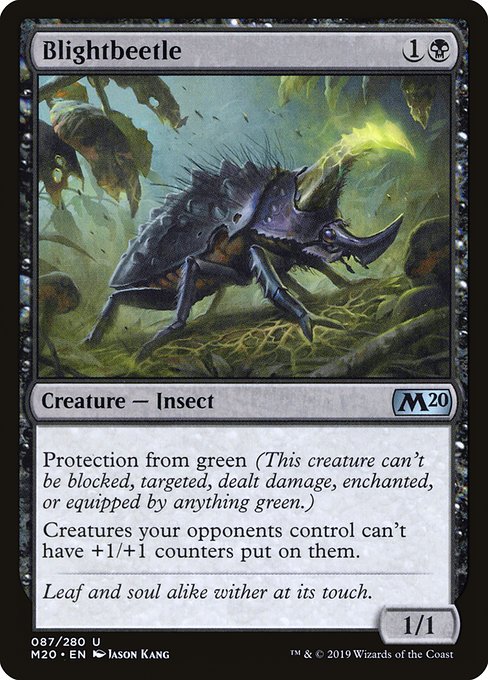
PMC drones only have so much office toilet time, so Wizards had to prove that Magic’s unwieldy rules set and 20,000+ cards could translate to a six-inch diameter screen and be appealing in twelve-minute chunks. To do so, they had to design cards that would appeal to grinders on the go, free-to-play players of various skill levels, and brand new players using Arena as an onramp to Magic. The introduction of best-of-one pairings, bot-driven Quick Drafts, and Arena-exclusive formats meant a pivot in design practices, where cards have multiple modes and are useful against most decks, but particularly powerful against certain colors and archetypes.
You can see this design shift best in the color hosers available to players. Pre-Alara, hosers could knock you out of the game entirely; Alara to Arena, they traded 1-for-1 for value or tempo and were designed to be sideboard cards; post-Arena, they became flexible answers that were defensible as main deck cards. The popularity of Best-of-One play on Arena means that Wizards began designing more cards with multiple modes that can be maindecked, from Hunter’s Mark to Whack to Ray of Frost.

The most influential cycle of the Arena era comes, perhaps unsurprisingly, from Throne of Eldraine. Redcap Melee, Mystic Dispute, Oakhame Adversary, Specter’s Shriek, and the also-ran Archon of Absolution all hate on their own color, but are useful against the other four to varying degrees. Contrast these efficient hate cards to the M20 cycle released a few months before Eldraine, which was an efficient but narrow cycle of focused enemy hosers: Aether Gust, Devout Decree, Fry, Noxious Grasp, and Veil of Summer.
While hyper-powerful to the point of getting banned in multiple formats, Veil of Summer is basically useless against a non-Blue or -Black deck and thus relegated to the sideboard, albeit every Green sideboard. While you wouldn’t exactly be happy casting Oakhame Adversary at four mana, it’s never useless. The Eldraine cycle was a serious upgrade to the Theros cycle of self-hatred (Gainsay, Glare of Heresy, Peak Eruption, etc.)–while the Theros cycle were useless against four-fifths of the game, Mystic Dispute’s fail state is a bad Mana Leak.
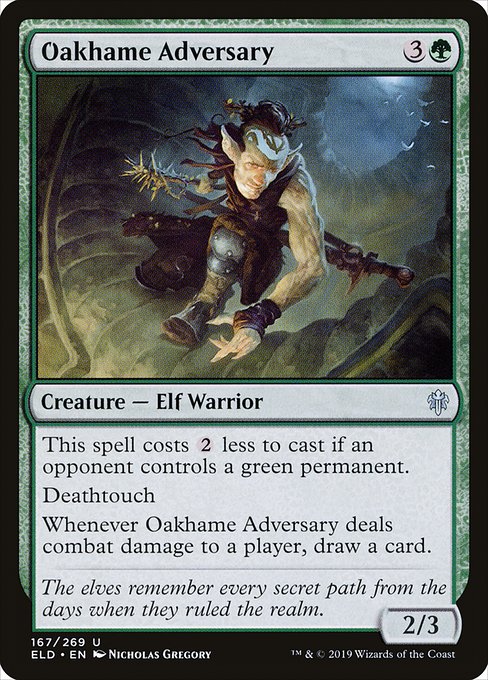
Post-Arena, we see color hate that applies the lessons Wizards has learned. Change the Equation is a stellar example modeled on Mystic Dispute—it’s useful against almost every deck, and extremely potent against Red or Green decks. It doesn’t do anything too powerful, it just has a minor desirable effect against the field and stays relevant longer against enemy decks. Cards like Divine Smite or Ray of Frost come from the Elephant Grass/Dream Tides school of color hoser—useful against any deck, but charged up against an enemy color.
You’re never unhappy to cast Knockout Blow, but it’s especially choice to cast it for W. Likewise, Redcap Melee is defensible as removal against most decks, but against Red, you avoid the obnoxious drawback. Ray of Enfeeblement and Lithomantic Barrage can take down an Elvish Mystic, but can also take down an Archangel Avacyn or Questing Beast. It’s a much more forgiving model than either the old school “destroy all Plains/Islands/Swamps” class or the efficient-yet-situational post-M10 Deathmark/Dark Betrayal class.
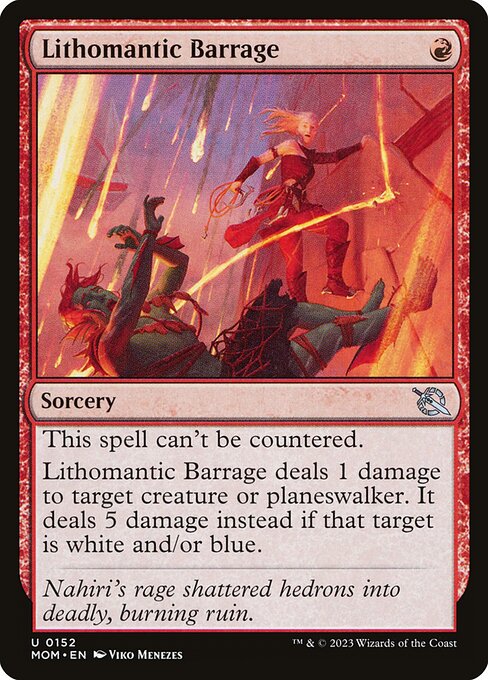
Three decades of card design has modified the game into something far removed from Richard Garfield’s original concept—gone are the bean-counting nuisance of Cumulative Upkeep, vanity mechanics like Rampage and Banding, and more than anything, the obsessive focus on shifting land types, rewriting protection, and altering colors. We’ve come a long way since I used to Whim of Volrath a Spinal Villain because I couldn’t afford an Avatar of Woe**.
In the fifteen years since Shards of Alara, we’ve seen color hosers become another category of removal and pivot from “relegate to sideboards in warped metagames” to maindeck consideration, from Combust to Fry to Lithomantic Barrage. It streamlines deckbuilding, affords players a sense of efficacy, and regulates tournament environments without feeling as random and binary as a coinflip. It’s different than what’s come before, but so long as those packing Plains are matching up against Mountain dwellers and making each other sweat, it’ll always feel like Magic.
* You could build decks from a complete collection of Standard cards you acquired through microtransactions, but could only run one of each Mythic and two of each rare in a given deck, meaning you couldn’t replicate an actual deck, only a pallid facsimile.
**Ironically, after twenty years, this Volrath-Villain “combo” now costs about twelve times as much as an Avatar.
Rob Bockman (he/him) is a native of South Carolina who has been playing Magic: the Gathering since Tempest block. A writer of fiction and stage plays, he loves the emergent comedy of Magic and the drama of high-level play. He’s been a Golgari player since before that had a name and is never happier than when he’s able to say “Overgrown Tomb into Thoughtseize,” no matter the format.

